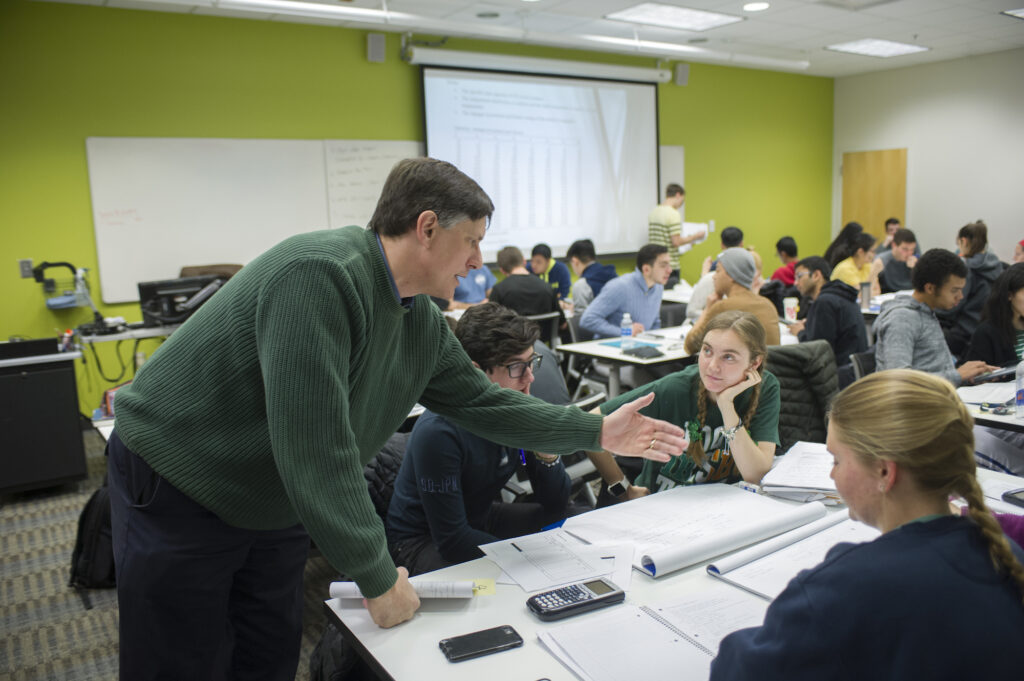
Relationships matter. In Relationship-Rich Education: How Human Connections Drive Success in College, authors Peter Felten and Leo Lambert highlight how decades of research demonstrate that peer-to-peer, student-faculty, and student-staff relationships are the foundation of learning, belonging, and achieving in college. In addition to influencing the breadth and depth of student learning, retention, and graduation rates, relationships “are the pathways to the learning, professional and civic outcomes of higher education for our students.”
- How do you foster a sense of community in your classroom?
- How do you foster trustworthiness and facilitate relationship building among students?
- How do your students know that you value their working together and supporting each other’s learning?

Ellen Yi Chen Mazumdar, Mechanical Engineering
In my class, students work together on team projects and lab assignments. Additionally, I tell them that they can work on homework assignments together as long as they document who they worked with. This makes the class more cooperative and less competitive, which builds a stronger sense of community and social connection. I tell students that they will evaluate each other at the end of the semester, which also helps develop a sense of responsibility for team progress. As the semester progresses, I often find that the students start sitting more and more with their teammates in class and often come to me as a group to ask questions. This demonstrates to me that they value working together and supporting one another.
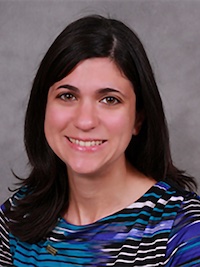
Christina Ragan, Biological Sciences
I use group collaborative projects and discussions in small groups using the breakout rooms. For some activities I like to have the same students work together all semester, and for others they are random groups. I hold myself and my students accountable for the work assigned. I like to praise the students when they work together and to solve problems. I discuss how science is collaborative and I am always here to help.
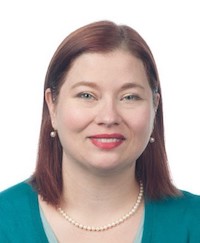
Mary Holder, Neuroscience
I begin each class session with a silly question (e.g., what’s your favorite cereal?) to answer in the chat. I make sure to ask the students how they are doing and provide time to engage in conversations if they are necessary. I also try to make jokes or have students draw personal connections to the course material. In my Fall 2020 course, the students created their own in-jokes about material that came up in the course or in the discussions that happened in the chat.
I do talk about how to have an academic discussion with ground rules when the subject matter comes up that could be challenging personally. These ground rules include using “I” language, no personal attacks, discussing the evidence for different positions, etc. I also invite the students to add some ground rules that they would like for these discussion.
One of my biggest priorities when moving to synchronous, online courses was to use more active learning strategies. In all my classes this year, I have made frequent use of the break-out rooms for students to work together to discuss content, evaluate the information, and to create knowledge. I have even explicitly stated that the use of these small group discussions are to allow them time to work together and help support each other in their learning. When I did a mid-term feedback survey, some of the students wanted fewer break out rooms, and I used this opportunity to reiterate my reasons for the use of these small group discussions.

Peter J. Hesketh, Mechanical Engineering
I hold breakout tutorial groups with students every week, and I ask for volunteers to show their work to the rest of the class when we reconnect in the main room. These classroom practices help foster a sense of community among the students. To facilitate relationship building, I have students work in teams on the term project, two students per group, and they hand in one solution for the team at the end of the semester. There is extra credit for the group assignments and discussion in the classroom.

Jeffrey Davis, Electrical and Computer Engineering
For me, fostering community depends on the class. For my more traditional ECE classes I try to encourage in-class discussion using online platforms like Kahoot. I have noticed if students realize that others share their views and questions that they are more willing to discuss in class. These discussions can linger after class and I think students are more willing to approach each other to form student groups, etc. Also during these last two semesters, I have used Microsoft Teams to increase the connectivity of the students and to me as well. I like this platform over other tools that I have used (like Piazza, Canvas, BlueJeans, and Slack) because it allows students to meet each other using video chat in a channel, which enables video, audio, white boards, and screen shares. For some of my Grand Challenges LLC classes, I will have sessions where student teams meet each other’s MS Teams for discussion and peer evaluations of their projects. I have observed that this is a great opportunity to interact with students who they don’t know as well. For me, if I record the “official” sessions this allows me to observe many more students. I think having the recorded option for official class assignments helps them keep talking as well.
Furthermore, even having the text chat option that will immediately show up on my phone and the students’ phone as a text helps to bind the class together in a positive way. I am hoping that this will be something that we learn from “pandemic schooling” that we can pull forward to augment the in-class experience in the future.
For my Grand Challenges LLC classes, I also have noticed that having opportunities for students to meet outside the classroom with a collection of students and faculty can help bring a community in the classroom. For example, in past years I have had a NOVA night where the students share a meal and watch this longest running science program. Having a discussion afterwards also helps get students interacting outside their immediate social groups. I have noticed empirically that if you start these outside interactions in early in the semester, they work much more effectively. If you wait too late in the semester, the culture of meeting outside the classroom in this way does not take hold and attendance is typically much lower.
I feel like the various communication platforms can help build trust among students and instructors in a traditional classroom, but this can be very difficult. In project-based learning classes that I am a part of, we encourage students working on a project to meet outside of class in a social way. If they can get to know each other better and then come back to their project, they seem to trust each other much more. In the classroom, we try to promote a sense of “psychological safety” so that students will trust each other enough to actually have constructive conflict to push their projects forward. We do make time in class to have a 5-minute check-in so that students can ask each other how they are doing and what is going on in their lives. Doing this on a consistent basis can help to build trust among the students. However, ultimately the students must make the connection themselves, I feel like as a teacher you can provide the environment and scaffolding and hope that the relationships of trust will grow.
Typically in my ECE classes I will try to emphasize periodically that working and learning from their peers is maybe the best reason to come to a place like Georgia Tech. In practice, I have to be very clear what is “copying” and what is “teaching your peers” in this context. In my project-based classes, the students work in teams so it is constantly reinforced that they must work, learn, and play together!
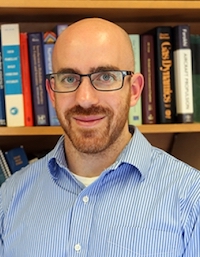
Adam Steinberg, Aerospace Engineering
I foster a sense of community in the classroom by providing the following:
- Students work on in-class problems in breakout sessions (on BlueJeans at present, but normally in small groups).
- Flipped class models allow students to discuss concepts behind problem sets in small groups.
- Students have a large-scale team project.
- We have Piazza as a discussion forum and the students have a private GroupMe page.
I personally interact with all of the breakout sessions, project teams, etc. We have lots of time in our synchronous meetings for Q&A and discussions, including discussions that are subject-relevant but outside the course material.

John Cressler, Electrical and Computer Engineering
Be informal and approachable, be interested in their lives. Talk to them about non-class things. Share your own life with them.
Students always get whether you are sincere in your caring or not. I am honest and real with my classes.
I tell them often and much that I value their working together.

Thomas Gaylord, Electrical and Computer Engineering
Issue: Loss of student engagement in the Optics Laboratory due to pandemic.
Solution: The Optics Laboratory Racing Team was planning and training for the annual Pi-Mile Road Race scheduled for April. We were disappointed when this was cancelled due to the pandemic. However, in its place we participated individually remotely in the Burdell Run on May 16, 2020 sponsored by the Alumni Association. We all wore bib number 1885, the year Georgia Tech was founded. As the pandemic continued, we again rallied for another individual, remote group run in the AJC Peachtree Road Race on Thanksgiving day November 26 with the theme “Earn your Turkey.” I think we felt comradery at a distance.
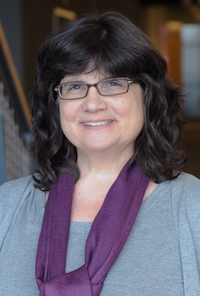
Carol Colatrella, Literature, Media, and Communication
My courses are seminars requiring reading, writing, and oral communication. Assignments include individual written assignments, individual oral reports, team oral reports, and a group paper in addition to asking students to respond online to writing prompts related to the readings. Students read each others’ papers and participate in small-group and general discussion.
I encourage the students to regard class as a safe space and to respect others’ privacy. I ask students to meet in small groups, to share their ideas in writing and orally, and to understand that their own success in the class depends on their collaborations.
The course introduction explains that we learn from one another, that I learn from them, and I hope that they learn from the readings and what I and their classmates have to say about those ideas. After students have the opportunity to hear from each other and to share ideas about readings in small and large group discussions, they feel more comfortable accepting that 40% of the course assignments are based on group work.

Ashok Goel, Computing
We designed, developed and deployed an AI agent called SAMI (for Social Agent Mediated Instruction) that helps build a sense of community and belonging among students. In most online classes, and also in many large blended and in-person classes, students lack social interaction and the sense of emotional connection that comes with it. SAMI reads students’ self-introductions and finds connections among them based on background (for example, two students who worked for IBM at some point in their lives), geographical location and time zones (for example, two students living in Bangkok and Singapore), and interests and hobbies (for example, students interested in photography).
Student feedback on SAMI has been very positive. To deal with the ethical issue of student privacy, we give the students the option of either connecting with other students or not, and either following SAMI’s recommendations or not.
We are now expanding SAMI to build more “natural” and random” social connections among students based on their online postings and thereby enhance their sense of belonging and emotional well-being.

Umakishore Ramachandran, Computing
It is virtual classroom using BJ/webex. I use turning point questions integrated with my lectures. A students can collaborate with one another (easier in the virtual format through the chat window) to learn the right answer from one another. Right or wrong answers get a point each. I used to have right answers worth 2 points and wrong answers 1 point when I did this in physical classroom. But in order to reduce the stress through the pandemic I have changed to giving a point irrespective whether they get it right or wrong. The TP scores count towards class participation grade. It helps build community among the students.
I follow a very unique approach to examinations. I publish the exam on Friday midnight. The students can collaborate (piazza, etc.) with another to discuss the questions and work out solution strategies. Then, the students take a “closed everything timed honorlock proctored timed test” on canvas. The questions are exactly the same as the one I published.
This strategy removes the stress of taking a timed tests. Several advantages: 1) With varied reading comprehension skills, doubts on what the question is asking is eliminated through the collaboration among the students. 2) The students learn from one another since I allow collaboration. That’s my main goal that the students learn. 3) The student still has to show that they have learned by taking the timed closed everything test.

Tushar Krishna, Electrical & Computer Engineering
While remote teaching during COVID-19, I started something called “COVIntroDuctions” where in each class, 4-5 students would present a slide about themselves (who they are, some hobbies, etc). By the middle of the semester, everyone was introduced to everyone else and I also heard offline that some students who shared their instagram / twitter or online gaming usernames during their covintroductions connected to others in class who shared interests. This was a great success.
Students answering each others’ questions on Piazza was highly encouraged. Students were also encouraged to form study groups and attend “recitation” sessions held by TAs (similar to office hours) where priority was given to questions posed by a group of students (while office hours were used for individual interactions between the TAs and students).

Aldo Ferri, Mechanical Engineering
I learn the students’ names and try to learn something about each of them. When I see things in common between students, I like to point them out. Eg, “Hey, Alex and Lauren, did you know that you are both from Pittsburgh?” I was surprised that when I did that, it would start conversations and in some cases, resulted in students forming study groups. If you learn students’ names, you can almost turn Q&A sessions into discussions among friends. Eg. “As Lindsey pointed out…” “This gets back to the question that Jay raised in the last class…” Of course, I also try to promote use of the Piazza site, but that doesn’t always catch on, or interest in the discussion board peters out over the course of the semester.
I try to convey the feeling that we’re all in this together. It’s us versus the subject. To that end, I’ll sometimes go beyond the surface of a question or problem to ask “what if” questions. “What if the object had a different shape?” Or, “What if the spring was replaced with a cable?” At times, I’ll study a problem in some detail before class, and then let the students in on some insight that I got. For example, “I wrote a Matlab program just to see what would happen if … and surprisingly, I found that …” This tells students that (a) there are limits to the teacher’s knowledge, (b) the student is willing to put in some extra effort, and (c) the teacher has a sense of wonder about how physical systems behave. I also like telling students “no one is born knowing this,” to confirm that it’s OK to not understand it right away.
I always encourage students to form study groups and I try to learn who they are studying with. That way, I can sometimes relate to them as small teams, knowing that if I explain it well to one team member, they can bring the others up to speed. I also give a mid-term teaching survey and make a point to incorporate their suggestions into the remainder of the class. That usually improves the course delivery, but also makes the students realize their role in making the learning environment better for everyone.
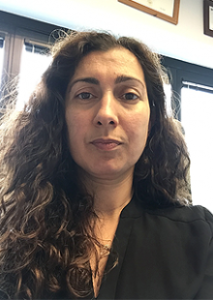
Kyriaki Kalaitzidou, Mechanical Engineering
1. by asking them to introduce themselves during the first week, 2) work in small groups with their neighbors on a regular basis throughout the semester to answer questions or solve problems, a 7-8 min long activity that also serves as a mental break from the lecture, 3) work on group projects, the project duration is about 4-5 weeks usually at the second half of the semester

William Todd, Scheller College of Business
As with most Professors of the Practice, I schedule plenty of guest speakers in my Management in the Healthcare Sector course – CEO’s, renowned surgeons, consultants, etc. Students always comment in CIOS that this is one of their favorite features of the course. I have students serve as introducers of these guests. It gives them an opportunity to practice public speaking skills and also for them to meet these healthcare leaders and serve as a host while I am setting up the classroom. Students volunteer for these assignments based on their career interests. The speakers are all very generous with their time in follow-up discussions and students have benefitted with medical school recommendation letters, career advice, internships, and even jobs.

Eric Overby, Scheller College of Business
I have students come physically to class while wearing masks for safety (at least for now, per CDC guidance). No hybrid option, no live stream option, etc. Students have good intentions, but if they have a substitute for coming to class and physically interacting with each (before, during, and after class), then many of them will take it, and the sense of community will suffer.
Additionally, I have students come physically to class to meet each other and see that they are more than a name in a chat box.
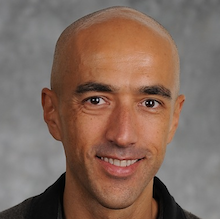
Alex Orso, Computer Science
I have students work in teams and encourage them to share, when they exchange contact information, also one piece of additional information about themselves (hobbies, passions, …). I also have a couple of classes during which we have a candid and informal discussion about the class in which we have pizza, and the students can provide feedback and ask questions, including questions not directly related to the class (within reason :-). Finally, I sometimes share personal professional and personal experiences related/tangential to the class topics, including my personal experience as a student (a century ago or so…).

Sal Barone, Mathematics
We use Piazza for official class business and the students use various apps such as GroupMe, Discord, and Slack.
I treat the students with respect and give them the responsibility to act appropriately and not engage in academic misconduct. They are encouraged to collaborate appropriately on certain assignments, such as the open-ended “Exploration” assignments in my course.
I mention that I value their working together and supporting each other’s learning several times throughout the semester during lecture, and I encourage this behavior almost daily on Piazza.
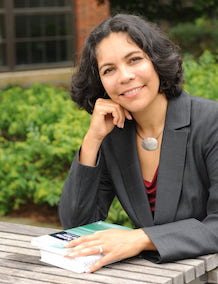
Jennifer Singh, History and Sociology
Learning everyone’s name is essential. One thing I do in the first week of class is require that all students create a short video using Voice Thread on Canvas. Students introduce themselves along with a response to a prompt related to the course theme. I require students to comment on at least 5 videos submitted by their classmates. The videos help to establish commonalities and differences we share and in the pandemic, an opportunity to see and hear everyone without a mask.
Students participate in a team project – this year it was creating a podcast. The teams worked together throughout the semester. They had to create the podcast and do a group presentation together. What was great about this project is that the students got to contribute their different skills that were needed to complete the project.
I carved out time in the class schedule for students to meet together as a group. This is important because the students have very busy schedules but they are all available for the scheduled class time. I also met with the groups individually so that they could share their ideas about the project and get feedback directly from me.
